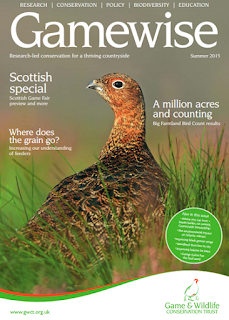 |
| Image by Laurie Campbell |
by Andrew Gilruth
Following RSPB reports that hen harrier nests have been abandoned in Lancashire, Sir Ian Botham is
reported to be offering a £10,000 reward to anyone prepared to rescue abandoned eggs and release them back into the wild.
Clearly people monitoring harrier nests would have had to act before the eggs cooled so it’s too late to do anything for the clutches abandoned a few weeks ago.
But could it work in future?
Have chicks been reared in captivity before?
Yes. In 1973-77 in North America, conservationists managed to produce more than 300 peregrines from eggs
1. By 1979 more than 30 species of raptor, from falcons to large vultures, had been raised in captivity. Today bird conservation programmes are increasingly focused around captive propagation and release for supplementing dwindling populations
2.
Does this extend to collecting eggs from wild birds?
Yes. This has been undertaken for several species around the world. In 1994 French (love it, blame the French) conservationists
3 started collecting Montagu’s harrier eggs from nests located in arable fields just before harvest. The details, which were published in 2000, strongly suggest there are no grounds for concern over behavioural issues after the fledged chicks were released back into the wild.
Could this work be undertaken while investigations continue into missing adults?
Yes. It’s hard to think of a reason why it could not be undertaken alongside any ongoing criminal investigation by the police.
Surely birds’ eggs are protected?
Yes. This type of conservation activity would have to be authorised by Natural England. They would carefully review the facts before issuing a
licence. Under the EU Birds Directive they can grant permission for intervention on conservation grounds. Such a licence would need to be granted in advance of the harrier nesting season.
Could the eggs be moved fast enough?
This would need careful planning. Remote cameras continually monitor each nest so it should be possible to asses when a male is late retuning to the nest. As soon as the female leaves the nest observers could move quickly, with portable incubator boxes and switch the eggs with ‘dummies’. If the adults were to return the real eggs could be replaced. Either way the eggs are not lost.
Should there have been such a contingency plan ready?
Yes. One report
4 suggests 70% of hen harrier nesting attempts failed on grouse moors due to adults going missing. Having a contingency plan in place would ensure the eggs hatch and the progeny are returned to the wild. With the hen harrier population so low, it appears odd to repeatedly allow clutches of 5-8 eggs to fail.
What next?
Whilst those on the ground continue their investigation into the missing birds, perhaps it is also time to start planning conservation contingencies before any more nests are abandoned.
All the remaining eggs have a chance – we should prepare contingencies now.
Footnotes
1.
Population Ecology of Raptors, Ian Newton 1970
2. Wiemeyer 1981, Meyers & Miller 1992, Cade & Temple 1995
3. Amar et al 2000
4.
A Future for the Hen Harrier in England, Natural England 2008
FREE Hen Harrier Recovery Plan guide
Download your FREE guide to the hen harrier & grouse shooting issue >
What's inside your FREE guide
✓ essential hen harrier facts
✓ details of the hen harrier recovery plan
✓ summary of the issues and arguments surrounding a proposed ban on driven grouse shooting
✓ key figures and scientific findings
Download your FREE guide >
 Up in Scotland on Thursday 11th June we’ve arranged a very special evening walk at Kinnordy Estate, Angus. An informative guided tour around the grounds will be concluded with a fantastic barbecue back at the estate.
Up in Scotland on Thursday 11th June we’ve arranged a very special evening walk at Kinnordy Estate, Angus. An informative guided tour around the grounds will be concluded with a fantastic barbecue back at the estate. GWCT News & Advisory
GWCT News & Advisory












